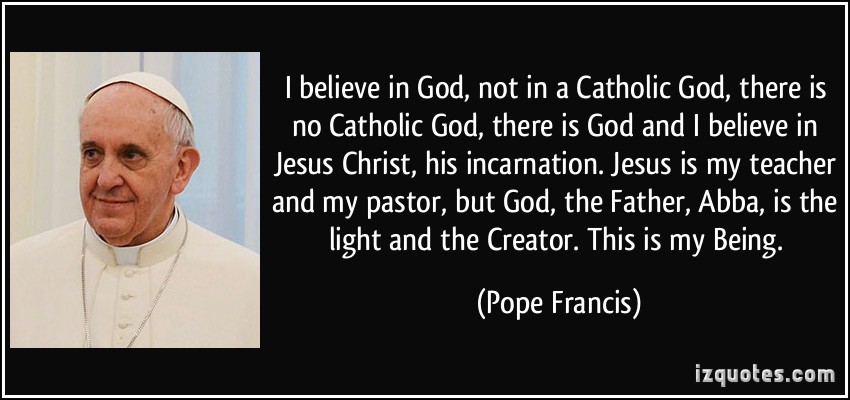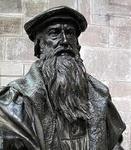You are changing the topic because Protestant iconoclasm is not based on reality but mostly the influence of John Calvin. Religious statuary, properly used, is a thoroughly biblical practice.
People who oppose religious statuary forget about the many passages where the Lord commands the making of statues. For example: "And you shall make two cherubim of gold [i.e., two gold statues of angels]; of hammered work shall you make them, on the two ends of the mercy seat. Make one cherub on the one end, and one cherub on the other end; of one piece of the mercy seat shall you make the cherubim on its two ends. The cherubim shall spread out their wings above, overshadowing the mercy seat with their wings, their faces one to another; toward the mercy seat shall the faces of the cherubim be" (Ex. 25:18–20).
It looks like Protestant iconoclasts should correct God.
David gave Solomon the plan "for the altar of incense made of refined gold, and its weight; also his plan for the golden chariot of the cherubim that spread their wings and covered the ark of the covenant of the Lord. All this he made clear by the writing of the hand of the Lord concerning it all, all the work to be done according to the plan" (1 Chr. 28:18–19). David’s plan for the temple, which the biblical author tells us was "by the writing of the hand of the Lord concerning it all," included statues of angels.
It looks like Protestant iconoclasts should correct God.
Similarly Ezekiel 41:17–18 describes graven (carved) images in the idealized temple he was shown in a vision, for he writes, "On the walls round about in the inner room and [on] the nave were carved likenesses of cherubim."
During a plague of serpents sent to punish the Israelites during the exodus, God told Moses to "make [a statue of] a fiery serpent, and set it on a pole; and every one who is bitten, when he sees it shall live. So Moses made a bronze serpent, and set it on a pole; and if a serpent bit any man, he would look at the bronze serpent and live" (Num. 21:8–9).
One had to look at the bronze statue of the serpent to be healed, which shows that statues could be used ritually, not merely as religious decorations.
Catholics use statues, paintings, and other artistic devices to recall the person or thing depicted. Just as it helps to remember one’s mother by looking at her photograph, so it helps to recall the example of the saints by looking at pictures of them. Catholics also use statues as teaching tools. In the early Church they were especially useful for the instruction of the illiterate. Many Protestants have pictures of Jesus and other Bible pictures in Sunday school for teaching children. Catholics also use statues to commemorate certain people and events, much as many Protestant churches have three-dimensional nativity scenes at Christmas.
If one measured Protestants by the same rule, then by using these "graven" images, they would be practicing the "idolatry" of which they accuse Catholics. But there’s no idolatry going on in these situations. God forbids the worship of images as gods, but he doesn’t ban the making of images. If he had, religious movies, videos, photographs, paintings, and all similar things would be banned. But, as the case of the bronze serpent shows, God does not even forbid the ritual use of religious images.
It is when people begin to adore a statue as a god that the Lord becomes angry. Thus when people did start to worship the bronze serpent as a snake-god (whom they named "Nehushtan"), the righteous king Hezekiah had it destroyed (2 Kgs. 18:4).
The bottom line is, when God made the New Covenant with us, he did reveal himself under a visible form in Jesus Christ. For that reason, we can make representations of God in Christ. Even Protestants use all sorts of religious images: Pictures of Jesus and other biblical persons appear on a myriad of Bibles, picture books, T-shirts, jewelry, bumper stickers, greeting cards, compact discs, and manger scenes. Christ is even symbolically represented through the Icthus or "fish emblem."
Common sense tells us that, since God has revealed himself in various images, most especially in the incarnate Jesus Christ, it’s not wrong for us to use images of these forms to deepen our knowledge and love of God. That’s why God revealed himself in these visible forms, and that’s why statues and pictures are made of them.
Since the days of the apostles, the Catholic Church has consistently condemned the sin of idolatry. The early Church Fathers warn against this sin, and Church councils also dealt with the issue.
The Second Council of Nicaea (787), which dealt largely with the question of the religious use of images and icons, said, "[T]he one who redeemed us from the darkness of idolatrous insanity, Christ our God, when he took for his bride his holy Catholic Church . . . promised he would guard her and assured his holy disciples saying, ‘I am with you every day until the consummation of this age.’ . . . To this gracious offer some people paid no attention; being hoodwinked by the treacherous foe they abandoned the true line of reasoning . . . and they failed to distinguish the holy from the profane, asserting that the icons of our Lord and of his saints were no different from the wooden images of satanic idols."
and they failed to distinguish the holy from the profane,
The Catechism of the Council of Trent (1566) taught that idolatry is committed "by worshipping idols and images as God, or believing that they possess any divinity or virtue entitling them to our worship, by praying to, or reposing confidence in them" (374).
"Idolatry is a perversion of man’s innate religious sense. An idolater is someone who ‘transfers his indestructible notion of God to anything other than God’" (CCC 2114).
The Church absolutely recognizes and condemns the sin of idolatry. What anti-Catholics fail to recognize is the distinction between thinking a piece of stone or plaster is a god and desiring to visually remember Christ and the saints in heaven by making statues in their honor. The making and use of religious statues is a thoroughly biblical practice. Anyone who says otherwise doesn’t know his Bible.




 :
: